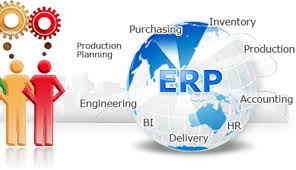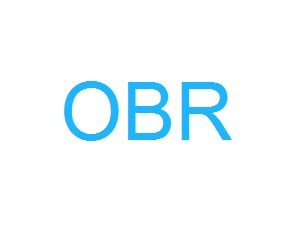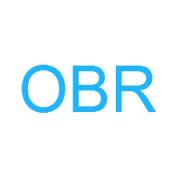Developed ‘ERP Systems’ Lead to ‘Business Growth’!
 An efficient ERP system (Enterprise Resource Planning) is the hidden software backbone in competitive organizations. The ‘value‘ of the ‘right‘ system cannot be overstated. There are many legacy names for these systems. MRP, MRP2 (Material Resource Planning) and POS (Point of Sale)….. These software products focus on one specific business area, though they can ‘expand‘ with add-on modules to cover additional essential business systems such as customer support, shipping/receiving, product, and manufacturing databases to include BOM (Bill of Materials) and Routers (Process Sequence).
An efficient ERP system (Enterprise Resource Planning) is the hidden software backbone in competitive organizations. The ‘value‘ of the ‘right‘ system cannot be overstated. There are many legacy names for these systems. MRP, MRP2 (Material Resource Planning) and POS (Point of Sale)….. These software products focus on one specific business area, though they can ‘expand‘ with add-on modules to cover additional essential business systems such as customer support, shipping/receiving, product, and manufacturing databases to include BOM (Bill of Materials) and Routers (Process Sequence).
The choice between ERP software systems can be derived from different ‘economic‘ and ‘ease of implementation‘ factors. The easiest and least costly option for ERP development is to install ERP software ‘as designed‘ within ‘user-configurable‘ parameters. The resulting database information can be a ‘gold mine’, though the software can be limited by ‘generic‘ data types. Another approach would be to develop ‘custom ERP software‘ to store specific data information. This focus is more costly, though this ‘developed‘ ERP software can deliver better efficiency results. The choice between the two ERP options is a combination of ‘capital improvement budgets‘ and ‘time required‘ for system implementation. Still, before a choice is made, a thought should be given to the amount of ‘clarity‘ which will be delivered from the ERP System and the resulting business decisions that can be derived from the ‘process data‘.
Many large organizations have the resources required to consider custom developed ERP system software. Though, small to midsize companies may have an advantage and a choice from a ‘wide-array‘ of ERP software systems on the market. (Luckily, the number of ERP software options from entrepreneurial developers is ‘robust‘!) Again, there are factors to consider. The advantage of a smaller less robust ERP software system is that it can be less costly, more easily installed and deliver 80% of desired data metrics. Plus, another advantage of a ‘smaller ERP system‘ is that the ‘faster‘ to ‘business self-sufficiency‘ likely increases the chance of business survival. Large ERP systems require ‘economic means‘ and ‘time‘ for investigation, development, integration, and training. Another factor is that the ‘required‘ data may be a ‘moving‘ target. As business develops and products change, ERP systems may need to adjust to deliver new data metrics. ‘Smaller’ ERP Systems may also have the advantage of ‘metric adjustment‘ as well.
The main ‘Lean‘ benefit of a well-defined ERP System is that the system needs to deliver ‘clarity‘ of ‘Key Performance Indicators‘. This clarity is a result of ‘mined‘ data which can deliver efficiency and quality insights. Though, it is important to know ‘What‘ data to acquire, ‘How‘ that data is ‘Interpreted‘ and then ‘Implemented‘ into your ‘business strategy‘. ERP System data is essential to deliver ‘expected’ customer ‘delight‘. (Why else would someone purchase your product?). ERP system development is the ‘hidden‘ Lean essential to a well-run ‘Lean‘ organization.
Normally, the focus of ‘Lean‘ is on the ‘Human Factor‘ side of organizational efficiency. This important ‘Human Factor View‘ of Lean is supported by the ‘Less-Visible’ ‘ERP System‘ backbone which allows ‘semi-automation‘ and retrieval of vital ‘process data‘. Lean ERP systems directly affect an organizations ‘Competitive Advantage‘. Efficient ‘business system data‘ is the ‘deliverable‘ of a well-developed ERP System and the main focus of BPI (Business Process Improvement) which leads to the ‘Holy Grail‘ of business: ‘Business Growth‘!
Todd Adams
OBR Optimization Engineering: Lean Six Sigma CI, ERP Software Development, Quality Systems Enhancement, Business Process Improvement, CI Project Work. www.OBREngineering.com; POC: Todd Adams, Todd.Adams@OBREngineering.com; (424) 241-0290.
As the Famous Sales Guru Grant Cardone says, 10X your OBSESSION!



